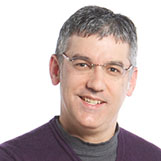Physics Staff Awards
- Details
- Category: Department News
- Published: Thursday, April 27 2017 12:54
The Lorraine DeSalvo Chair's Endowed Award for Outstanding Service recognizes employees who provide benefit beyond their regular duties, promote positive professional and personal exchanges among colleagues, and work effectively within the Department of Physics and/or with outside contacts. Nominees must have been employed within the Department of Physics for a minimum of one year.
The Sibylle Sampson Award was established by Sibylle Sampson, a long-time Physics employee and valued assistant to former Chair John S. Toll. It spotlights an employee whose one-time accomplishment otherwise might go unrecognized. The employee’s undertaking will have benefited the entire Department or a specific unit, and shown creativity, initiative or self-motivation. Nominees must have been employed within the Department of Physics for a minimum of one year. Two nominators are needed for the Sibylle Sampson Award.
The Staff Excellence Award recognizes employees who excel in job performance, provide a friendly and supportive atmosphere, and display a personal commitment to the Department and to positive workplace morale. Up to three awards may be given. Nominees must have been employed within the Department of Physics for a minimum of one year.
| Year | DeSalvo Chair's Award | Sibylle Sampson Award | Staff Excellence Award |
|---|---|---|---|
| 2022 2021 2020 2019 2018 2017 2016 2015 2014 2013 2012 2011 2010 2009
2007
2005 2004 2003 2002 2001 2000 1999 1998 1997 1996 1995
1993
1991 1990
1988
1986
1984 1983 1982 | Clay Daetwyler Brian Straughn Jesse Anderson
Lorraine DeSalvo Bonnie Seal-Filiatreau Pauline Rirksopa Tommy Baldwin Mark Conners no awards Jane Zhang Paulina Alejandro Nicholas Hammer Jesse Anderson Clay Daetwyler
Robert Dahms Tom Payerle John Cataldi Mary Ridgell Joyce Robinson Margaret Lukomska Tom Payerle Pauline Rirksopa Lorraine DeSalvo Maurice Pairel Loretta Robinette Cassie Jones, Jesse Anderson Dawn Leavell Linda O'Hara, Betty Alexander Bernadine Kozlowski Geoffrey Elbo Pam Solomos, Nono Kusuma Jan Andrews Karl Harzer, Brenda Dunn Rose Otto Pota Floros, Harriet Husman Jean Clement Michele Eastman Elbert Barretta Delores Knight | Rob McIntire Naomi Russo Dannielle Watkins Samantha Suplee Ayla Hurley Paulina Alejandro Logan Anbinder Donna Hammer Allen Monroe no awards Anne Suplee Xiao Ning Zhao Pauline Rirksopa Bonnie Seal-Filiatreau Doug Bensen, Scott Lasley Loretta Robinette
Kari Aldridge Randy Holder Donna Hammer Sherri Menoes Margaret Lukomska Allen Monroe Al Godinez Tuck Owens Ruth Zerwitz Delores Knight Norman Reese
Pauline Rirksopa
| Josiland Chambers, Naomi Russo, Bonnie Seal-Filiatreau Lea Bartolome, Melanie Knouse, Allen Monroe Melissa Britton, Josiland Chambers, Tom Woycheck-Gleason, Ayla Hurley, Bonnie Seal-Filiatreau Janet Das Sarma, Donna Hammer, Kristin Stenson Heather Markle, Don Lynch, Jane Wang Jessica Crosby, Claudia Key and Kelly Phillips Margaret Lukomska, Naomi Russo and Melissa Britton Eliot Hammer Amy Streets no awards Julie Callis |

